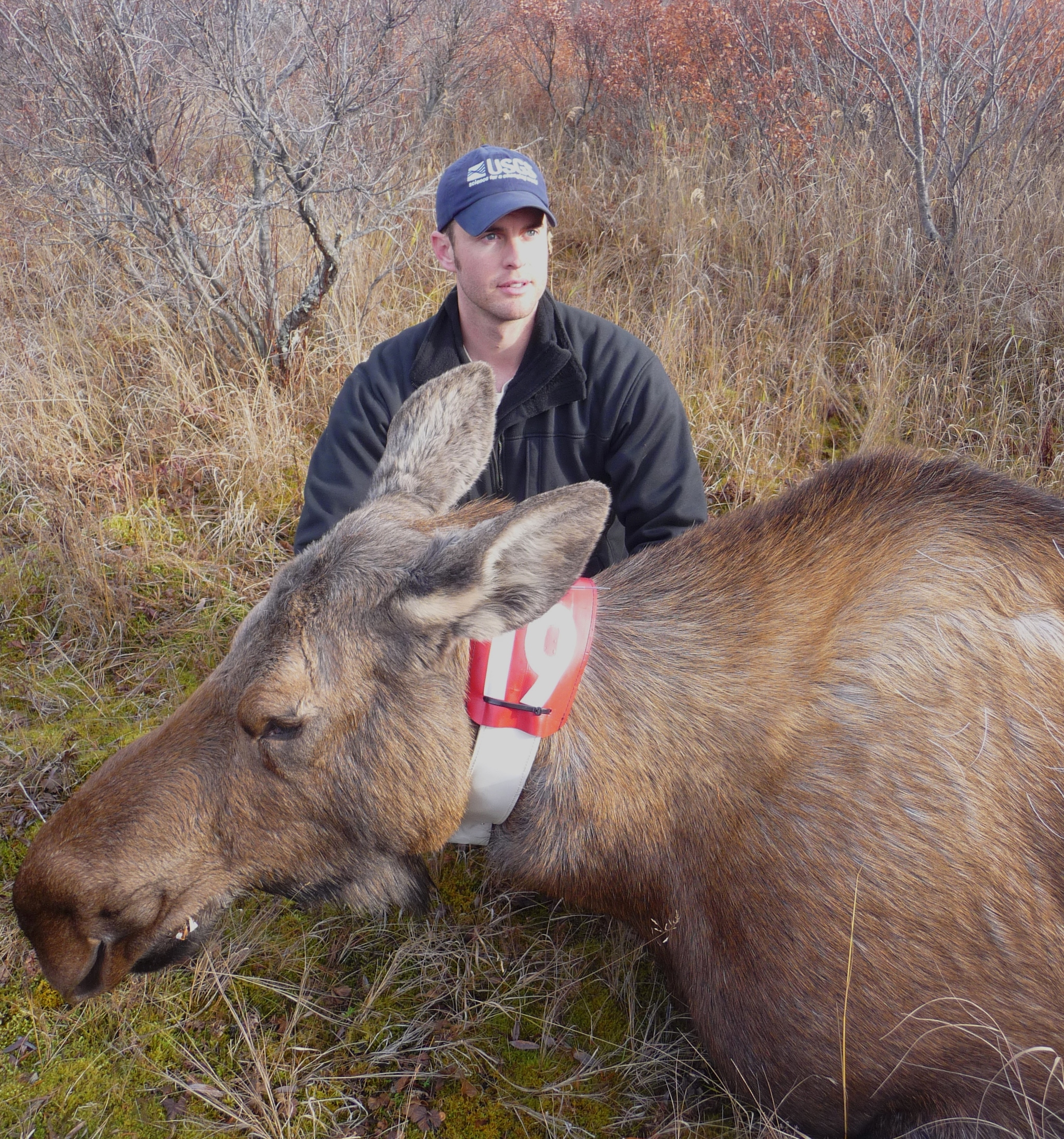As I navigated the icy roads through Turnagain Pass a couple weeks ago in a borrowed car filled with totes and duffle bags, I couldn’t help feeling excited about my new position as a Wildlife Biologist for the Kenai National Wildlife Refuge. It was fun to think that these spectacular mountains around me would be my home for the foreseeable future. I thought about driving through the pass for the first time, some 15 years ago, when some college buddies and I had made the trip down to Homer for halibut and combat fishing on the Russian.
After that first trip up to Alaska, I remember looking at maps of the Alaska and realizing that I just hadn’t seen enough of the state. With that realization came another — that I needed to actually live in Alaska to truly experience it. Although I loved my job as a guide in northern New Mexico and enjoyed the work I’d been doing helping with bighorn sheep and black bear projects, I immediately started applying for biologist jobs in Alaska.
I got lucky and landed one in Galena, on the Yukon River, where I worked as a seasonal biologist for the Koyukuk/Nowitna National Wildlife Refuges. While working on a variety of waterfowl, moose, and other projects I gained much valuable experience. More importantly, I gained a genuine appreciation for working with wildlife in the vast and intact ecosystems of Alaska.
After graduating from New Mexico State University with two Bachelor’s degrees, one in Fisheries Science and one in Wildlife Science, I accepted a graduate position at Texas A&M University where I studied deer in the Florida Keys. Although the weather was certainly nice in the Florida Keys, I found that I was always looking north toward the ‘Great Land.’ Upon finishing up my master’s degree, I took a position with the Alaska Peninsula and Becharof National Wildlife Refuges in southwest Alaska as the lead mammals biologist.
I worked on the Alaska Peninsula for over a decade where I studied wolves, caribou, moose, and other mammals. Some of my favorite work in southwest Alaska included studies of wolf and bear predation on caribou and moose calves, and wolf use of alternate prey such as salmon and marine mammals. I also conducted studies of moose habitat use, migration, reproduction, and calf survival. These and several other studies have provided me with a good understanding of ungulate population dynamics and predator-prey relationships that I hope to put to good use here on the Kenai.
I have also worked with a variety of other wildlife including mesocarnivores such as fox and wolverine, swans and other waterfowl, shorebirds, and a variety of small mammal species including shrews and bats. I’ve also been lucky enough to lend other biologists a hand with their studies including traveling to Kodiak National Wildlife Refuge to capture and radio-collar brown bears, and to Hawaii to aerial net-gun Mouflon sheep and feral cattle. I’ve also taken time away from work to help develop survey methods for Marco Polo sheep and ibex in central Asia, where I still travel each year.
I loved living in Bristol Bay, particularly because I’m an ardent fly fisherman, so the decision to move was not made lightly. Still, moving to a new place always presents opportunities to learn new things and challenge myself and I think that the decision to relocate was a good one!
Since my arrival here in Soldotna a couple weeks ago I’ve already been busy working cooperatively with the Alaska Department of Fish &Game to complete aerial surveys to estimate moose numbers on the southern Kenai Peninsula. It’s been a great opportunity for me to meet new people and to start learning this new area. As a pilot, I’m also very excited about getting to fly around in some new country, both as part of work and for fun!
I am proud to work on our nation’s public lands, helping to manage and conserve our state’s resources for the continued benefit of both wildlife and people. I look forward to learning more about this remarkable area and to settling into this great community.
Dominique Watts is a new wildlife biologist at the Kenai National Wildlife Refuge. Find more information about the refuge at http://kenai.fws.gov orhttp://www.facebook.com/kenainationalwildliferefuge.

